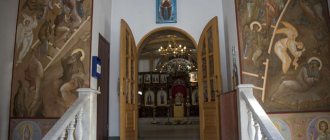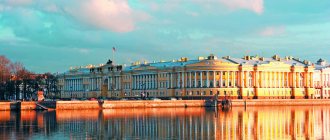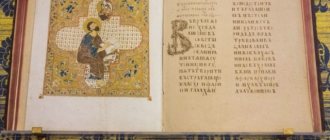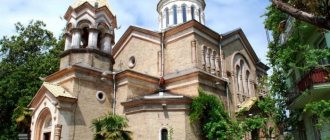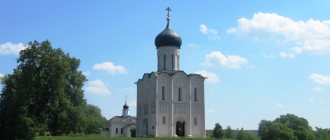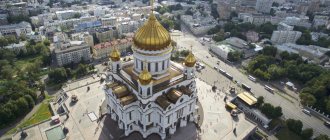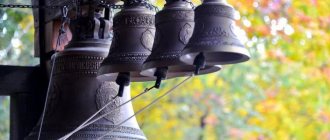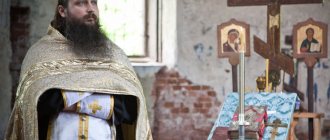Christians in Syria
make up 20.2% of the population. [ 1 ] The largest Christian denomination in the country is the Antiochian Orthodox Church (known as the Orthodox Patriarchate of Antioch and All the East), [ 2 ] [ ] [ ] followed by the Melkite Catholic Church, various Eastern Catholic churches that have a common root with the Antiochian Orthodox Church, [5] and later some Orthodox churches such as the Syriac Orthodox Church and the Armenian Apostolic Church. There is also a minority of Protestants and members of the Assyrian Church of the East and the Chaldean Catholic Church. The city of Aleppo is believed to have the largest Christian population in Syria.
During the final times of the Ottoman Empire, most Christian Syrians emigrated, especially after a bloody chain of events targeting Christians, especially in 1840–1845, during the 1860 Lebanese Civil War and the Assyrian genocide. Between 1899 and 1919, 900,000 Syrians
(more than 90% of them were Christians). [ ]
Source
Christian communities in Syria, constituting 15.2% of the population, [1] include two great traditions. On one side are Catholics and Protestants, as well as a small number of Syrians belonging to Western denominations. On the other hand, the vast majority belong to Eastern Christianity, which has existed in Syria since the earliest days of Christianity. Main eastern groups:
- Autonomous Eastern Orthodox Churches;
- Eastern Catholic Churches, in communion with Rome;
- and the independent Assyrian Church of the East (i.e. "Nestorians"). Followers of the Assyrian Church of the East include almost all Eastern Aramaic speakers of Assyrian/Syriac ethnicity, whose origins lie in Mesopotamia, as do some Eastern Orthodox and Roman Catholics.
The schisms brought with them many sects as a result of political and doctrinal differences. The most frequently discussed doctrine was the nature of Christ. In 431, the Nestorians were separated from the main body of the Church because of their belief in the dual character of Christ , i.e.
.
, close in meaning, but not quite himself, hypostasis), human Jesus and divine Logos. Therefore, according to the Nestorians, it was believed that Mary was not the mother of God, but only the mother of the human Jesus. The Council of Chalcedon, representing the main current of Christianity, in 451 confirmed the dual nature of Christ in one person; Thus, Mary was the mother of one person, mystically and at the same time human and divine. The Miaphysites taught that the Logos took upon the instance of humanity as its own
in a single nature. They were the forerunners of today's Syrian and Armenian Orthodox churches.
By the thirteenth century, rifts had developed between Eastern or Greek Christianity and Western Christianity, Latin or Roman Christianity. However, in subsequent centuries, especially during the Crusades, some of the Eastern churches professed the authority of the Pope in Rome and entered into or confirmed communion with the Catholic Church. Today there is a call for Eastern Catholic churches to preserve their original language, canon law and liturgy.
Greek Orthodox Church of Antioch ("Orthodox")
Antiochian Orthodox Church of the Presentation of the Blessed Virgin Mary in Hama, Syria.
Monastery of the Franciscan Missionaries of Mary in Aleppo. The largest Christian denomination in Syria is the Antiochian Greek Orthodox Church (officially called the Orthodox Patriarchate of Antioch and All the East), formerly known as the Melkite Church after divisions in the 5th and 6th centuries, in which its clergy remained loyal to the Eastern Roman Emperor (" Melek"
) from Constantinople.
Supporters of this denomination usually call themselves " al-Rum"
, meaning
East Roman
or
Greco-Asiatic
in Turkish and Arabic.
In this context, the term Rûm
is used instead of
Yāvāni
or
Ionani,
which means "Greco-European" or "Ionian" in Biblical Hebrew and Classical Arabic. The name "Greek" refers to the Koine Greek liturgy, used in their traditional prayers and priestly rites.
Members of the community sometimes also call themselves Melkites
, which literally means
monarchists
or
supporters of the emperor
in Semitic languages, referring to their past allegiance to the Roman, Macedonian and Byzantine empires, but in the modern era the term tends to be most commonly used by followers of the Melkite Catholic Church locl.
Members of the Greek Orthodox Church of Antioch and its Greek-Syrian sister church the Melkite Catholic Church are also present in Lebanon and the southern Hatay province of Turkey, bordering Northern Syria, and have been well represented in the Syrian diaspora from Brazil. Argentina, Mexico, USA, Canada and Australia.
Syro-Orthodox Church
Archbishop of Aleppo "Mor Gregorios Yohanna Ibrahim" (left) of the Syriac Orthodox Church with Austrian politician Reinhold Lopatka in 2012.
The Syriac Orthodox Church is the largest group of Orthodox Churches in Syria.
The Syriac or Jacobin Orthodox Church, whose liturgy is in Syriac, was separated from the church supported by the Byzantine Empire (Eastern Orthodox), due to the Chalcedonian dispute.
Armenian Apostolic Church
The Armenian Apostolic Church is the second largest of the group of Orthodox churches in Syria. He uses Armenian in liturgy, and his doctrine is Miaphysite (not Monophysite, which is incorrect or misused by Catholic Chalcedonians and Orthodox Chalcedonians).
Protestant churches
Syria also has a minority of Protestants. Protestantism was introduced by European missionaries and a small number of Syrians belonging to the Protestant denominations Gustav Adolf Werk (GAW) as the Diaspora Regent of the Evangelical Church in Germany actively supports persecuted Protestant Christians in Syria with relief projects. [ ]
Eastern Catholic churches
Of the Eastern Catholic churches, the oldest is the Maronite, with connections to Rome, dating back to at least the 12th century. His status is currently unclear. Liturgy in Syriac.
The Patriarchate of Antioch never recognized the mutual excommunications of Rome and Constantinople in 1054, so it was canonically still in union with both. After a patriarchal dispute over elections in 1724, it split into two groups, one allied with Rome and the other with Constantinople. Today the term "Melkite" is used mainly among Greek Catholics in Syria and Lebanon. Like its sister Greek Orthodox Church of Antioch ("Orthodox"), the Greek-Melkite Catholic Church uses Greek and Arabic in its traditional liturgy.
Popes of the Catholic Church
Seven popes from Syria have ascended the papal throne, [8] [ ] many of them lived in Italy, Pope Gregory III [ 10 ] [ ] was the last pope born outside Europe until the election of Pope Francis in 2013. .
| Order number | Pontificate | Portrait | Name English Regnal | Own name | Place of Birth | Ratings |
| 1 | 33 – 64/67 | San Pedro Papa PETRUS | Simon Peet | Bethsaida, Galilee, Roman Empire | Saint Peter was from the village of Bethsaida, Gaulanitis, Syria, Roman Empire. | |
| 11 | 155 a 166 | Papa San Aniceto ANIQUETUS | Anicitus | Emesa, Syria | ||
| 82 | July 12, 685 August 2, 686 (1 year+) | Papa Juan V_ _ | Antioch, Syria | |||
| 84 | December 15, 687 September 8, 701 (3 years+) | San Sergio I Pope Sergius | Sicily, Italy | Sergius was born in Sicily, but his parents were Syrians [12] | ||
| 87 | January 15, 708 February 4, 708 (21 days) | Sisinio Papa SISINNIUS | Syria | |||
| 88 | March 25, 708 April 9, 715 (7 years+) | Constantine Pope COSTANTINUS sive CONSTANTINUS | Syria | Last papal visit to Greece until John Paul II in 2001. | ||
| 90 | March 18, 731 November 28, 741 (10 years) | Saint Gregory III Pope Gregory III | Syria | The third pope, bearing the same name as his immediate predecessor. |
SYRIAN CHURCHES
SYRIAN CHURCHES, conventional common name for ancient Christian churches, historical. whose homeland is the Syro-Mesopotamian region, who use or previously used the Syriac language in worship. Nowadays representatives of these communities live in Ch. arr. on the territory of Syria, Lebanon, Iraq, Turkey, India and have large diasporas all over the world; by ethnicity origin Assyrians, Arabs and Malayalees. The beginning of Christianity in Syria and Mesopotamia is associated with the preaching of the apostles Peter and Paul, Thomas, Addai and Mary. The center of the Christian community in this region was originally located in Antioch - the Antiochian Orthodox Church and the Sir build their foundation to this see. Jacobite church. Community Sir. Christians living in the territory of Sasanian Iran with a center in Seleucia-Ctesiphon, in the beginning. 5th century used canonical independence in relation to Byzantium. church, and after the rejection of the decisions of the Third Ecumenical Council (431), its isolation became dogmatic. level; it is now known as the Assyrian Church of the East. In con. 7 – beginning 8th centuries dept. the patriarchate with its center in Antioch was founded by the Maronites (later they moved to Lebanon, from the 12th century the Maronite Catholic Church was in union with the Roman throne).
In the narrow sense, Sir. a church is called one of the so-called. Ancient eastern (pre-Chalcedonian) churches, its official. name - Sir. Orthodox Church, in comparative religion it is designated under the name. “Sir. Jacobite Church,” according to the most common version, originating from the name of Bishop. Edessa Jacob Baradai, thanks to whose activities Sir. Christians who did not recognize the decision of the IV Ecumenical (Chalcedon) Council (451), in the 6th century. an independent hierarchy emerged. The head of the Church bears the title of Patriarch of Antioch and all the East; according to tradition, since 1293 the name Mar Ignatius has been added before his personal name in honor of St. Ignatius of Antioch. The Patriarchal residence was located in different centers, including mon. Deir az-Zafaran near Mosul (from the 13th century), Homs (from 1933), Damascus (from 1957). In the Church there is a special position of mafrian, the second person after the patriarch, responsible for the management of communities in the remote east. areas: from 7 to mid. 19th centuries The mafrianate nourished communities in Iran, from the middle. 20th century - in India. The total number of the flock is estimated at 1.5 million people, of which approx. 1 million people live in India, the rest live in the Middle East, Europe, North. and Yuzh. America, Australia. The most important monastic center is Tur-Abdin in the South-East. Turkey, where in the Middle Ages there were up to 70 monasteries. Sire. Orthodox Church - member of the WCC (since 1960), one of the founding members of the Middle East Council of Churches (1974). It is based on dogmatic teachings lies the theological system of Sevirus of Antioch, the largest representative of Monophysitism; based on canon. rights - “Nomocanon”, compiled in the 13th century. Gregory Bar Evroyo. In worship, in addition to sir. languages, Malayalam (India), Arabic (Middle East) and other languages of the diaspora are used.
With S. c. The fate of Christian communities in India is closely linked. Initially they belonged to the Assyrian Church of the East, but in the end. 16th century due to the Portuguese. colonization and activities of Catholics. missionaries entered into a union with Rome (Council of Diampere, 1599). All R. 17th century part ind. Christians came under the jurisdiction of Sir. Jacobite church, and the other remained subordinate to Rome. throne, forming the Syro-Malabar Catholic. church. Protestant churches subsequently separated from the first of them - the Malabar Independent Church. Tkhozhiyura Church (1773), Sir. Malabar Church of St. Thomas (1888), etc. In the 20th century. A number of church schisms occurred, then the Syro-Malankara Church (1912; part of the Syro-Jacobite community of India, which did not recognize the authority of the Patriarch of Antioch) and the Syro-Malankara Catholic Church arose. church (1930). After conflicts over the issue of ecclesiastical jurisdiction of local “Syrian” communities, since 1975 India has been supplied with 2 Catholicos - the head of the autocephalous Church and the head of the Church recognizing the authority of the Antiochian See (Mathrians). The center of Christian communities in India is the state of Kerala.
In S. c. There is also a Catholic one. branches: Melkite Catholic. the church separated from the Antiochian Orthodox in 1724, Sir. Catholic church - from Sir. Jacobite in 1782, Chaldean Catholic - from the Assyrian Church of the East in 1830. From a liturgical point of view, among the S. c. There are 2 groups - churches of the West Syrian rite (Syriac Jacobite, Maronite Catholic, Syro-Malankara) and East Syrian rite (Church of the East, Chaldean Catholic, Syro-Malabar Catholic).
Condition of Christians in Syria during the Umayyad Empire
Damascus was one of the first regions of the world to convert to Christianity during the ministry of Saint Peter. There are more Christians in Damascus than anywhere else in Syria. With the military expansion of the Islamic Umayyad Empire into Syria and Anatolia, non-Muslims who retained their original religion were forced to pay high taxes, were not allowed to own land, and were subject to humiliations, leading to pressure to convert to Islam. Islam. [ 13 ] [ ]
Damascus still has a significant Christian population, with several churches throughout the city, but especially in the Bab Tuma ( "Gate of Thomas"
in Aramaic and Arabic). Masses are held every Sunday, and civil services are held on Sunday mornings with free church attendance, although Sunday is a working day in Syria. Schools in predominantly Christian areas have Saturday and Sunday as days off, while official holidays in Syria fall on Friday and Saturday.
Integration
Old Christian stable of Jdeideh, Aleppo
Christians (as well as the few Jews) remaining in the country are involved in all aspects of life in Syria. Following in the tradition of Saint Paul, who preached and ministered in the marketplace, Syrian Christians are actively involved in the fields of economics, science, science, technology, arts and intellectual life, entertainment and politics in Syria. Many Syrian Christians are managers and directors in the public and private sectors , and some as local administrators, members of parliament and government ministers. A number of Syrian Christians are also officers in the Syrian armed forces. They chose to mingle with Muslims rather than form all-Christian units and brigades and fight alongside their Muslim compatriots against Israeli forces in the various Arab-Israeli conflicts of the 20th century. In addition to their daily work, Syrian Christians also engage in volunteer activities in less developed areas of Syria. As a result, Syrian Christians are generally viewed by other Syrians as a very active and important community. In September 2022, MP Hammoudeh Sabbah, a Christian and member of the Ba'ath Party, is elected speaker of parliament with 193 votes out of 252.[15]
Separation
Syrian Christians are more urbanized than Muslims; many of them live in or near Aleppo, Hama or Latakia. In the 18th century, Christians were relatively wealthier than Muslims in Aleppo. [16] [] Syriac Christians have their own courts, which hear civil matters such as marriage, divorce and inheritance based on the teachings of the Bible. By agreement with other communities, the Christian churches of Syria do not engage in religious proselytism. Leading Syrian Christians include chronicler Paul of Aleppo, chess player Philip Stamma, Syrian actor Basem Yahour, and Republic of Armenia musician George Tutunjian.
The Syrian Constitution specifies that the President of Syria must be a Muslim; this was the result of public demand at the time the constitution was written. However, Syria does not have a state religion.
Section III. Fourth period of Christian history (1453 - present)
The Jerusalem Church is the cradle of Christianity, the mother of all Churches. The first bishop of Jerusalem was the holy Apostle James, brother of the Lord, who here ended his life as a martyr. But the exceptionally difficult situation of Jerusalem and the disasters that befell this city since the first centuries of Christianity were the reason that the Jerusalem Church does not occupy its rightful place among other Churches. The First Ecumenical Council recognized the rights of the regional metropolitan for the Bishop of Jerusalem. The Fourth Ecumenical Council (451) crowned the Bishop of Jerusalem with the rank of Patriarch, calling Jerusalem “The Metropolis of the King of Ages and the cradle of Christianity.” The Sixth Ecumenical Council recognized the Patriarch of Jerusalem as fifth among other Patriarchs, and after the division of the Churches, the Patriarchate of Jerusalem took fourth place in the diptych of Local Orthodox Churches.
The history of the Patriarchate of Jerusalem has much in common with the history of the Patriarchate of Antioch. The flourishing times of the Jerusalem Church also passed in the 7th century, when it was defeated by the Muslim Arabs. Its disasters were completed by the Seljuk Turks (1076), and then by the Crusaders with the forcible imposition of Latinism here and the displacement of Orthodoxy. The rule of the Seljuk Turks was replaced in the 15th century by the rule of the Ottoman Turks. The Turkish administration, as elsewhere, burdened the Christian population with various kinds of exactions. The Christian shrines of Jerusalem and its environs, visited by hundreds of thousands of pilgrims from all over the Christian world, became a gold mine for the Turkish administration. The administration of the Patriarch of Jerusalem alone at the beginning of the 19th century had to pay up to 300 thousand liras to the local Turkish administration and various influential persons.
The Patriarchate of Jerusalem experienced particularly difficult times during the uprising of the Morean Greeks (1821). Persecution was organized against Christians with all its consequences. Bishops and monks were subject to such indemnities that in order to pay them they had to convert church silver into bullion. The leadership of the Patriarchate itself converted up to two thousand pounds of church silver and up to forty pounds of gold into bullion, including lamps and vessels donated to the Holy Sepulcher by the Byzantine emperors and, in addition, found itself in enormous debts, which there were no funds to cover. Its creditors - Muslims and non-believers - demanded that buildings belonging to the Patriarchate and its shrines be sold to pay off debts. The impoverishment of the Patriarchate was so serious that its clergy - bishops and monks - ate only bread and olives.
The position of the Patriarchate and the Christian population of Palestine in general changed for the better when Egyptian rule was established in Palestine (1833). The new ruler of Palestine, Ibrahim Pasha, showed generosity and justice towards Christians. He abolished illegal taxes and levies on Christians and various church institutions, and the execution of his orders was carried out with extraordinary severity and severity towards disobedient people. Such orders remained in Palestine even after the restoration of the power of the Sultan here (1841) thanks to the petition of the Russian embassy to the Porte.
The development of church life was hampered in the Patriarchate by the dependence of Jerusalem on the Patriarchate of Constantinople. Since the middle of the 16th century, the Patriarchs of Jerusalem were not only elected from among the Greeks, but the election itself took place in Constantinople. Until the death in 1534 of the Patriarch of Jerusalem Dorotheus, an Arab by nationality, the Patriarchal and episcopal sees were occupied by both Greeks and Arabs. With the election of the Greek Herman to the Patriarchal throne in 1534, all departments began to be replaced by Greeks. Patriarch Herman legalized the procedure for replacing cathedras by the Greek episcopate. The Greek Patriarchs did not become shepherds of the Jerusalem Church and preferred to live in Constantinople. For two centuries, Jerusalem rarely saw Patriarchs within its walls.
Taking advantage of this situation, the Patriarch of Constantinople intended to completely destroy the independence of the Jerusalem Church and turn it into one of his dioceses. But in 1845, under the influence of Russia, Kirill II was elected Patriarch of Jerusalem and began to reside here permanently. From that time to this day, Jerusalem became a real, and not nominal, cathedral city of its Patriarchs. At the same time, church life in the Patriarchate took a calmer course. In the gloomy history of the Eastern Church, attention is drawn to the widespread propaganda activities of Protestantism and especially the papacy, which did not lose hopes of subjugating the Orthodox East even after the fall of Constantinople. In 1577, a Greek college was opened in Rome, the purpose of which was to train missionaries for Catholic propaganda in the Greek East.
A characteristic moment in the history of the papacy in the Orthodox East is its struggle for possession of holy places. The fight with the Latins over holy places cost the Patriarch of Jerusalem a lot of money, because it gave the Turks the opportunity to make these places the subject of bargaining. However, the Greek Church steadfastly repulsed the attacks of power-hungry Rome, but Catholicism managed to achieve some success in Palestine. By the middle of the 19th century, there were already thousands of Roman Catholics in the Holy Land. In 1846, the Latin Patriarchate of Jerusalem, which existed under the Crusaders, was restored here, having large funds. In 1900, the Latins had 23 monasteries, 62 temples, 71 lower schools, 21 secondary and 2 higher schools in Palestine. The union also developed great activity in the Holy Land.
Simultaneously with Latinism, Protestantism was engaged in intensified missionary activity. Up to 300 different Protestant communities worked in this field in Palestine. Having large resources at its disposal, heterodoxy constantly sought to take away the right to own holy places from the Jerusalem Church. Catholics especially sought this. Thanks to the greed of Turkish officials, these harassments were successful. For example, at the beginning of the 17th century, the Latins, having received access, with the permission of the Jerusalem Patriarchate, to the Church of the Resurrection, without performing divine services there, managed to achieve not only this right, but by bribing the Turkish authorities, they captured Golgotha, part of the Bethlehem Temple and received permission to perform divine services in the cave Christmas. The ruling Patriarch Sophronius V (1579–1608) had to make a lot of efforts to obtain a firman from the Sultan, which stated that “Golgotha is the property of the Romans.”
In the 19th century, even the diplomacy of European countries intervened in this struggle, which, despite the protection of the rights of the Jerusalem Church by Russia, achieved some privileges to holy places for heterodoxy. The Church of Jerusalem, in the person of its Patriarchs and the Holy Sepulcher brotherhood, sparing neither money nor effort, steadily defended for the entire Orthodox Church its rights to own the Gospel places. The history of the Patriarchs of Jerusalem during the period described presents us with the history of the struggle with the Latins and other infidels for the possession of holy places in Palestine; their life was spent in constant travel from Jerusalem to Constantinople and back, as well as throughout all Orthodox countries. In Jerusalem and Constantinople, with greater energy and persistence, they defended the rights of Orthodoxy to the ownership of holy places before the Turkish government, suppressing the machinations of the Gentiles, mainly Latins, and in Orthodox countries - Russia, Moldova, Wallachia, Georgia - they tirelessly collected funds to maintain this ownership.
Patriarchs Theophan (1607–1644), Paisiy (1644–1661) and Dosifei (1669–1707) were distinguished by particularly difficult and frequent travels for these purposes. Of the Jerusalem Patriarchs of the second half of the 19th century, Patriarch Kirill II (1845–1872) attracts attention as an educated and active archpastor for the benefit of Orthodoxy. Having made Jerusalem his permanent residence, he turned all his attention to the improvement of his Patriarchate - he restored churches in his Patriarchal district, rebuilt the ancient destroyed churches in Lydda and Mount Tabor, founded a theological school for training priests and folk teachers from the natives, opened several folk schools, established a hospital, a printing house, etc. in Jerusalem. During the dramatic feud between the Patriarch of Constantinople and the Bulgarians, Cyril II in 1872 refused to sign the excommunication of the Bulgarian bishops, and for this, under the influence of the Patriarchate of Constantinople, in the same year he was his Jerusalem bishops deposed from the pulpit.
In 1917, all of Palestine was occupied by England, whose protectorate over all of Palestine was recognized in 1920 by the League of Nations. In 1947, the British government announced its agreement to refer the Palestinian question to the United Nations. The delegation of the Soviet Union proposed eliminating the British Mandate over Palestine and creating a binational Arab-Jewish democratic state in Palestine. In accordance with the decision of the UN General Assembly in 1948, the Jewish state of Israel was formed on part of the territory of Palestine. True, it was not a democratic state.
Immediately after the formation of the new state, a war began between Israel, on the one hand, and seven Arab states members of the Arab League - Egypt, Iraq, Saudi Arabia, Syria, Lebanon, Transjordan and Yemen - on the other. In 1949, a truce was concluded between the troops of Israel and the Arab states. The Arab part of Palestine was occupied by the troops of Transjordan and at the same time the annexation of the part of Palestine occupied by it to Transjordan was announced. Neither the Arabs nor the Israelis wanted to give up the city of Jerusalem, and therefore most of the so-called. The new city of Jerusalem remained in the hands of the State of Israel, the so-called. The old city is in the hands of Jordan, where the residence of the Patriarch is now located. In 1967, the eastern part of the city was annexed by Israel.
Currently, the Patriarchate of Jerusalem consists of two metropolises and one archbishopric with a flock of about 80 thousand people - Arabs and Greeks living in Jordan, Israel and Palestine, where there are 55 parishes, 23 churches and 27 monasteries. The spiritual jurisdiction of the Patriarch of Jerusalem also includes the Holy Mount Sinai with its archdiocese, metochions in Athens (Greece), Istanbul (Turkey) and Nicosia (Cyprus). Previously, diocesan bishops almost all lived at the residence of the Patriarch and rarely saw their flock, and others did not even know the volume or boundaries of their dioceses. This was a consequence of the extreme poverty of the dioceses, which could not support their bishops and their small staff. Currently, their situation has changed for the better. They began to frequently visit their dioceses, and many even live permanently in their diocesan cities, such as the Metropolitans of Ptolemais and Nazareth.
The management of the Patriarchate is concentrated in the hands of the Patriarch and the Synod existing under him, consisting of 14 bishops of the 18th Church of Jerusalem and the oldest archimandrites - members of the brotherhood of the Monastery of the Holy Sepulcher. The Patriarch is elected by the Synod. The Patriarch of Jerusalem has large monetary incomes from estates assigned to the Holy Sepulchre, farmsteads and pilgrims. From its funds, the Church supports not only the Patriarch, but also metropolitans, monasteries, schools, hospitals, parish clergy, the poor and orphans. In Palestine, together with the monastic ones, there were about 100 churches. There are about 22 monasteries in the Patriarchate (17 male and 5 female).
The Holy Sepulchre Monastery, whose abbot is the Patriarch, is of great importance. The Holy Sepulcher Monastery has the appearance of a town with streets, gardens, houses and temples. Here is the residence of the Patriarch, where he and the members of the Synod, the institution of the Patriarchate, are located. Only persons who devote themselves entirely to the service of the Jerusalem Church and prepare themselves here for the highest hierarchical service are accepted into the brotherhood. The Holy Sepulcher Brotherhood, founded in the 4th century, is an authoritative spiritual and moral force and takes part in church governance, subordinating the Patriarch himself to its influence. It has up to 200 inhabitants. The Brotherhood publishes the magazine “New Zion”.
Great disasters in the past did not allow the Patriarchate of Jerusalem to focus on spiritual enlightenment. There were no material resources either. The flock nurtured their spirit and forged their faith mainly through difficult trials. However, the Patriarchs of Jerusalem did their best to educate the clergy and people, inviting didaskals (teachers) from Byzantium and opening schools. Currently, the Church runs 9 charitable societies and institutions, 6 primary schools and gymnasiums. Outside of Israel, the Church of Jerusalem extends its jurisdiction to Jordan and the Sinai Peninsula (Egypt), where the autonomous Sinai Archdiocese is located. In Athens (Greece), Istanbul (Turkey) and Nicosia (Cyprus), several churches and farmsteads are subordinate to the Church, which are managed by the Patriarchal Epitropes. Members of the clergy of the Holy Land who wish to receive higher theological education use the theological schools of the Patriarchate of Constantinople.
Patriarchate of Jerusalem - Holy Land. Here are the greatest shrines of the entire Christian world - the Church of the Holy Sepulcher and the Resurrection, as well as the holy places where the founder of Christianity, Jesus Christ, was born, lived and preached, suffered and ascended to heaven. The Holy Sepulcher is a cave about two meters long and wide, and the very place where Christ reclined is a stone ledge made of rock two meters long, about 70 cm wide. The Body of Jesus, wrapped in a shroud, was laid on this stone block. Now this stone is covered with marble on top, divided into three parts that serve as thrones during the liturgy: the middle part for the Orthodox, the right part for the Armenians and the left, western, for Catholics. The entrance to the tomb cave is very narrow and low, its height is 1 m and 25 cm, its width is a little more than half a meter. Above the cave rises a pentagonal chapel, the cuvuklia, which is located inside the Church of the Resurrection of Christ.
Inside the Church of the Resurrection there is also Golgotha, towering over the entire western part of the temple. The Calvary Church flaunts here. Above the place where the Life-Giving Cross was erected, there is an open throne belonging to the Orthodox and Armenians.
Shortly after his election to the Patriarchal Throne, His Holiness Patriarch Alexy II of Moscow and All Rus' visited the Holy Land in 1991 at the head of a large group of pilgrims.
Title of the Primate of the Church of Jerusalem: Blessed Patriarch of the Holy City of Jerusalem and All Palestine.
The patriarchal residence is located in Jerusalem.
Christian cities/areas
Significant Christian population.
Christians are spread throughout Syria and form a significant population in some cities/areas; being the most important:
- Aleppo: has the largest Christian population of various denominations (mostly of Armenian and Assyrian/Syriac origin. Also members of the Antiochian Orthodox Church and Melkite Catholic Church).
- Damascus contains a significant part of Christian communities of all Christian denominations represented in the country.
- Homs: second largest Christian population (mostly members of the Antiochian Orthodox Church).
- Wadi an-Nasara, or Valley of the Christians, has a significant Christian population in the area (mostly members of the Antiochian Orthodox Church).
- Maaloula: has a significant Christian population (mostly members of the Antiochian Orthodox Church and the Catholic Melkite Church).
- Saidnaya: has a significant Christian population (mostly members of the Antiochian Orthodox Church).
- Al-Suqailabiya: Predominantly Christian population (mostly members of the Antiochian Orthodox Church).
- Mharde: predominantly Christian population.
- Tartus: has a significant Christian population (mostly members of the Antiochian Orthodox Church).
- Latakia: has a significant Christian population (mostly members of the Antiochian Orthodox Church).
- Suwayda: has a significant Christian population (mostly members of the Antiochian Orthodox Church).
- Al-Hasakah: has a large Assyrian/Syrian population.
- Kamyshili - has a large Assyrian-Syrian population.
- Khabur River: 35 villages with large Assyrian-Syrian populations.
